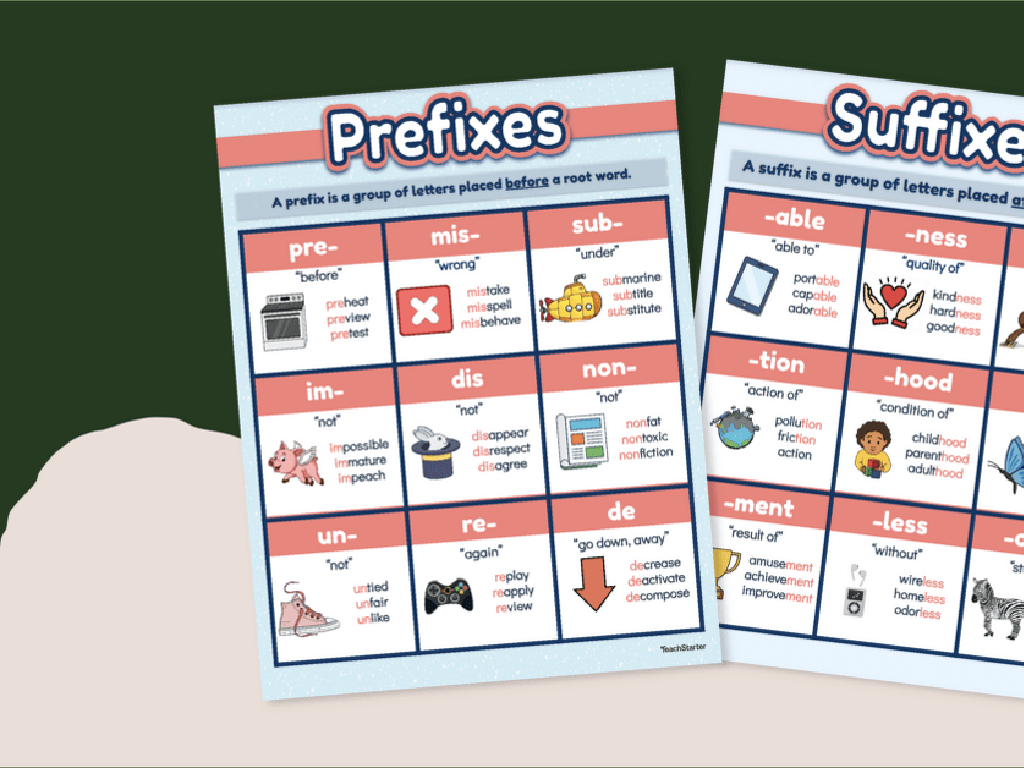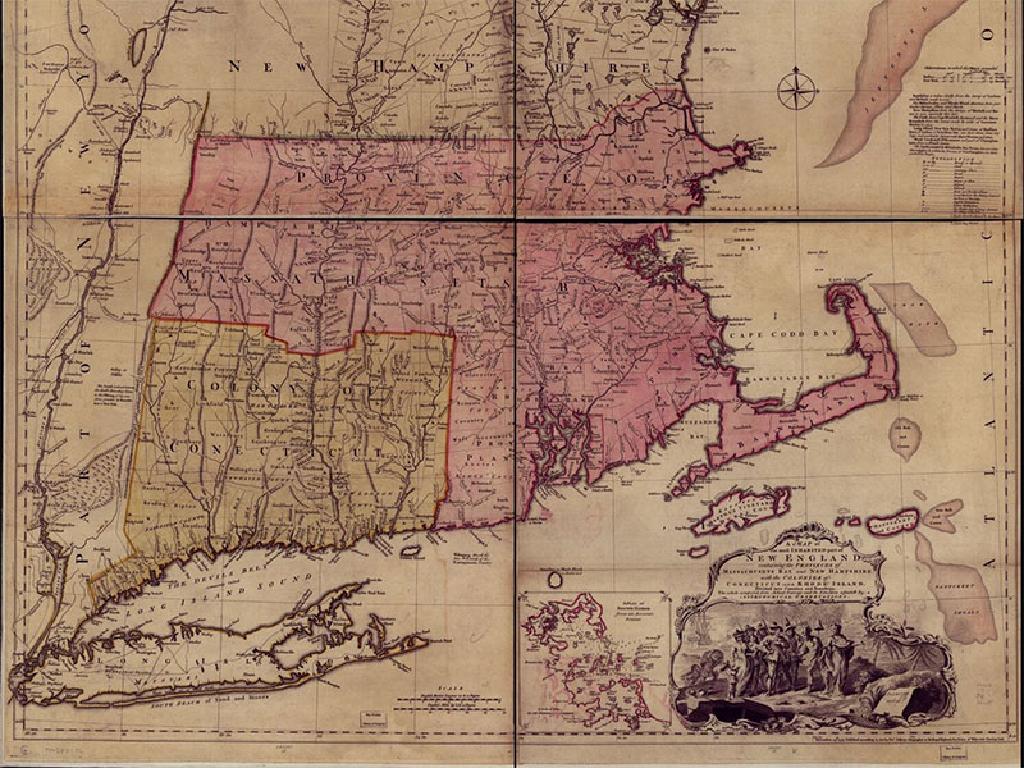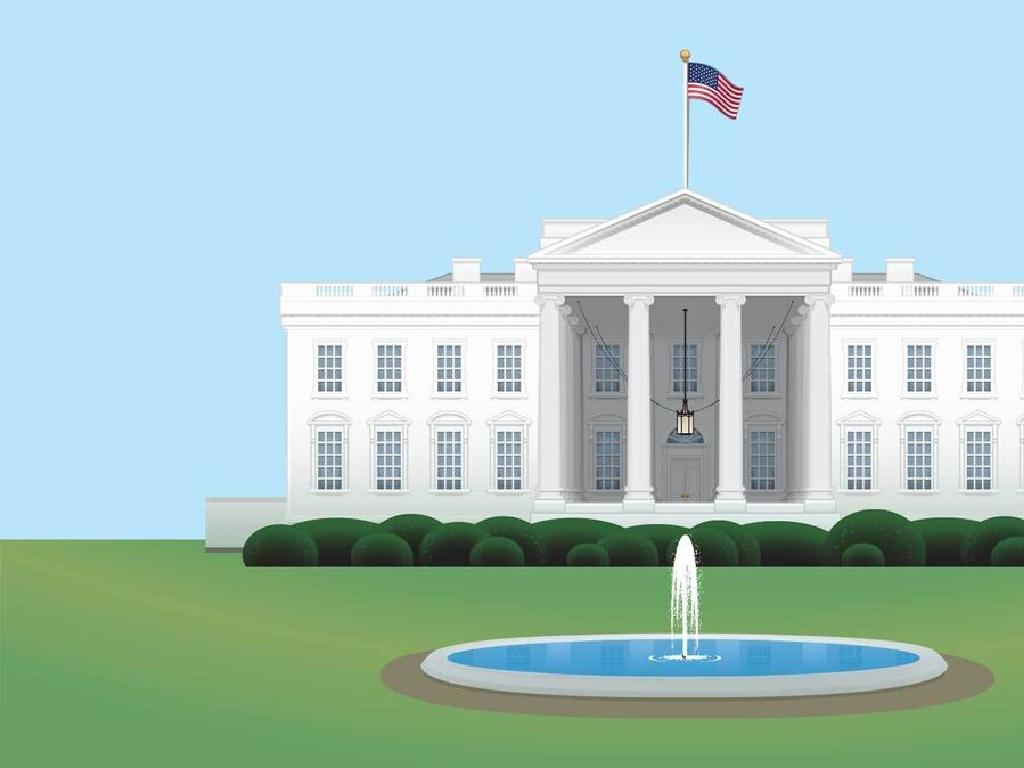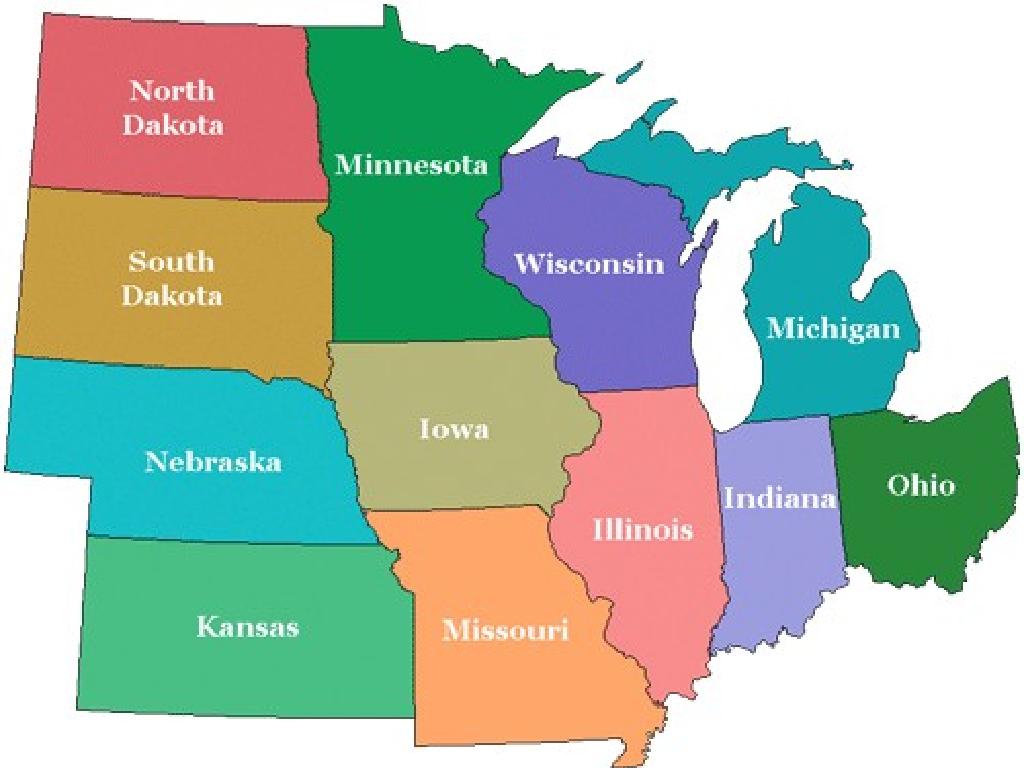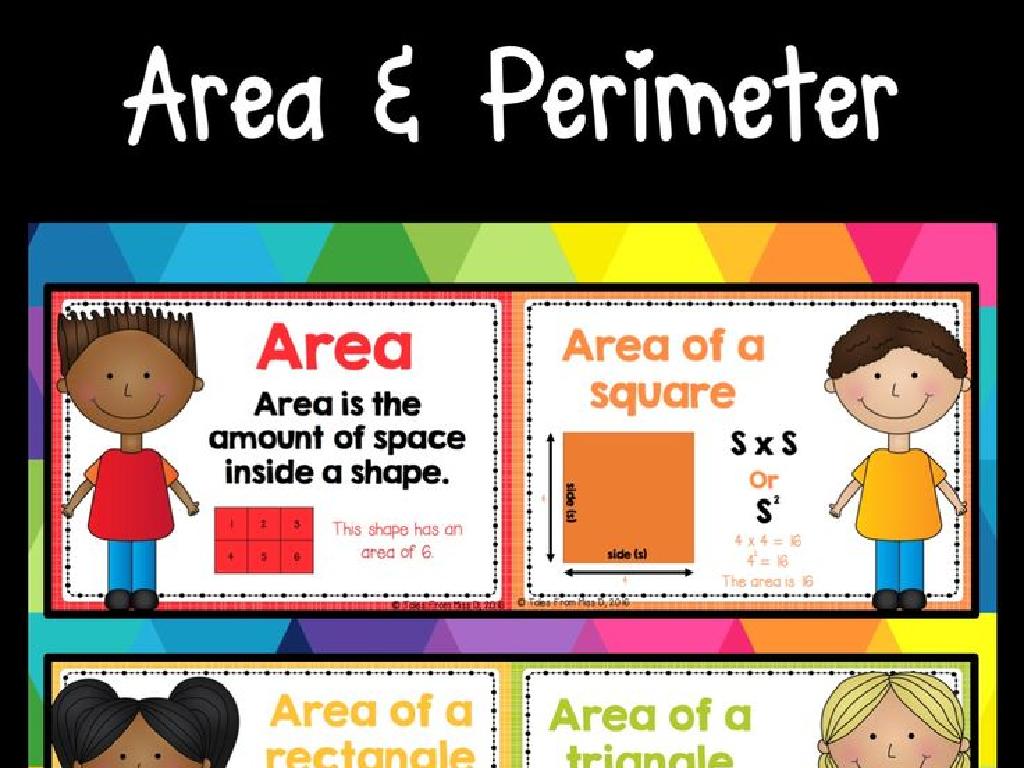Side Lengths And Angle Measures Of Congruent Figures
Subject: Math
Grade: Seventh grade
Topic: Congruence And Similarity
Please LOG IN to download the presentation. Access is available to registered users only.
View More Content
Understanding Congruence and Similarity
– Define congruence in geometry
– Congruent figures are identical in shape and size, with corresponding sides and angles equal.
– Criteria for figures to be congruent
– For figures to be congruent, they must match exactly when superimposed.
– Define similarity in figures
– Similar figures have the same shape but not necessarily the same size, with proportional sides and equal angles.
– Comparing congruence and similarity
– Congruence involves exact matching, while similarity involves proportionality.
|
This slide introduces the foundational concepts of congruence and similarity in geometry, tailored for a seventh-grade math class. Congruence refers to the exact matching of figures in both shape and size, which can be demonstrated by superimposing one figure onto another. Similarity, on the other hand, refers to figures that have the same shape but may differ in size; however, the corresponding angles are equal, and the sides are proportional. It’s crucial to emphasize the difference between these two concepts, as understanding them is key to solving problems related to geometric figures. Provide examples of both congruent and similar figures to illustrate these concepts clearly. Encourage students to think of real-life objects that are congruent or similar to reinforce the lesson.
Defining Congruence in Geometry
– Congruent figures: same size and shape
– Corresponding sides and angles are equal
– For example, if ABC E DEF, then AB = DE, BC = EF, AC = DF, and all corresponding angles are equal.
– Congruence denoted by ‘E’
– Congruence in geometric figures
– Understand how congruence applies to triangles, rectangles, and other polygons.
|
This slide introduces the concept of congruence in geometry, which is a fundamental concept in understanding shapes and their properties. Congruent figures are identical in size and shape, meaning all corresponding sides and angles are equal. The symbol ‘E’ is used to denote congruence between two geometric figures. It’s important for students to recognize this symbol and understand that congruent figures are essentially the same figure in different positions. Provide examples of congruent shapes and encourage students to visualize congruence by considering mirror images or shapes that have been rotated or flipped but still retain the same dimensions and angle measures.
Properties of Congruent Figures
– Congruent figures & transformations
– Figures can be rotated, reflected, or translated and still be congruent.
– Identical figures post-transformation
– Preservation of side lengths
– In congruent figures, corresponding sides have equal length.
– Preservation of angle measures
– Corresponding angles remain equal in congruent figures.
|
This slide introduces the concept of congruence in geometry, emphasizing that congruent figures are identical in shape and size, even after undergoing transformations such as rotations, reflections, or translations. It’s crucial for students to understand that these transformations do not alter the side lengths or angle measures of the figures. Activities can include having students identify congruent shapes in various orientations and creating their own pairs of congruent figures using tracing paper or geometry software. Encourage students to measure sides and angles to confirm their congruency. This foundational understanding will be important for future topics in geometry.
Identifying Congruent Figures
– Criteria for congruence
– Two figures are congruent if all corresponding sides and angles are equal.
– Writing congruence statements
– Use symbols like E to show two figures are congruent, e.g., ABC E DEF.
– Practice with congruent figures
– Find pairs of sides or angles in different figures that are exactly the same.
– Recognizing congruent parts
– Look for pairs of sides and angles in the same figure that match.
|
This slide introduces students to the concept of congruence in geometry. Start by explaining that congruent figures are identical in shape and size, with all corresponding sides and angles being equal. Teach students how to write congruence statements using the correct notation. During practice, students should identify congruent sides and angles in various figures, reinforcing their understanding of congruence. Encourage students to explain their reasoning when matching congruent parts. This activity will help solidify their grasp of congruence and its properties.
Exploring Similarity in Figures
– Similar figures: same shape
– Corresponding angles are equal
– Angles that match in position across figures
– Sides are proportional
– If one side is twice as long in one figure, all sides are
– Similarity symbol: ‘~’
|
This slide introduces the concept of similarity in geometric figures, which is a fundamental aspect of understanding congruence and similarity in mathematics. Students should learn that while similar figures maintain the same shape, their sizes may vary. It’s crucial to emphasize that corresponding angles remain equal in similar figures, and the sides are proportional, meaning the ratios of the lengths of corresponding sides are equal. The symbol ‘~’ is used to denote similarity between figures. For example, if triangle ABC is similar to triangle DEF, we write it as ABC ~ DEF. Encourage students to practice identifying similar figures and use the concept of proportionality to solve problems involving similar figures.
Calculating Side Lengths in Similar Figures
– Use ratios for missing sides
– Compare sides of figures to find unknown lengths
– Understand scale factor
– Scale factor: a multiplier for resizing figures
– Example: Similar triangles
– Find missing side in triangles with known ratios
– Practice with different figures
|
This slide introduces the concept of using ratios and scale factors to calculate missing side lengths in similar figures, which is a key aspect of understanding congruence and similarity in geometry. Start by explaining how ratios of corresponding sides can be used to find unknown lengths. Then, discuss the scale factor as a consistent multiplier that scales every dimension of a figure to create a similar figure. Use an example of similar triangles to show how these concepts apply in a practical situation. Encourage students to practice with different figures to solidify their understanding. Provide additional examples and practice problems involving various geometric shapes to ensure students can apply these concepts independently.
Angle Measures in Congruent and Similar Figures
– Angles in congruent figures
– Congruent figures have identical angles
– Angles in similar figures
– Similar figures maintain angle equality
– Measuring angles activity
– Use protractors to measure angles in class
– Understanding angle congruence
|
This slide introduces the concept of angle measures in congruent and similar figures. Congruent figures have exactly the same angles, which means that if two figures are congruent, all corresponding angles are equal. Similarly, figures that are similar also have equal angles, but their side lengths are in proportion, not necessarily equal. The class activity involves students using protractors to measure angles in various figures to explore these concepts hands-on. Teachers should prepare different shapes with marked angles for students to measure and verify congruence or similarity. Possible activities include measuring angles in paper cutouts, drawing figures with specified angles, or using digital tools to manipulate and measure angles in figures.
Real-Life Applications of Congruence and Similarity
– Congruence in architecture
– Buildings with symmetrical facades use congruent shapes for aesthetic balance.
– Scale models and maps
– Maps use similar shapes to represent real-world objects proportionally.
– Design principles
– Understanding congruence and similarity helps in creating visually pleasing designs.
– Significance in everyday life
|
This slide aims to show students how the mathematical concepts of congruence and similarity are applied in real-world scenarios, particularly in architecture, map-making, and design. By recognizing congruent structures in buildings, students can appreciate the need for precision and balance in construction. Scale models and maps are practical examples of similarity, where the same shapes are proportionally reduced or enlarged. In design, these concepts ensure that objects are harmonious and well-proportioned. Encourage students to observe their surroundings and identify examples of congruence and similarity, reinforcing their understanding of these key mathematical ideas.
Class Activity: Crafting Congruent & Similar Figures
– Create pairs of congruent figures
– Create pairs of similar figures
– Use rulers and protractors for precision
– Ensure sides are equal (congruent) or proportional (similar) and angles match
– Share and discuss your creations
– Explain how you made them and what you learned
|
In this hands-on activity, students will apply their knowledge of congruence and similarity by creating their own figures. Provide rulers and protractors to help them measure sides and angles accurately. For congruent figures, students should ensure all corresponding sides and angles are equal. For similar figures, sides should be in proportion while angles remain equal. Once completed, students will share their figures with the class, discussing the process and their understanding of these geometric concepts. This activity will reinforce their learning and provide an opportunity for peer learning. Possible variations include using different shapes, creating figures of different sizes, and challenging students to find real-life examples of congruent and similar figures.
Conclusion: Congruent & Similar Figures
– Recap: Congruent vs. Similar
– Congruent figures are identical in shape and size, while similar figures have the same shape but different sizes.
– Homework: Find real-life examples
– Look for objects that have the same shape and size or the same shape but different sizes around you.
– Document your findings
– Take pictures or draw the figures you find, noting down their properties.
– Study for upcoming quiz
– Review today’s lesson and practice problems to prepare for the quiz on congruence and similarity.
|
This slide wraps up the lesson on congruent and similar figures, reinforcing the difference between the two concepts. For homework, students are tasked with finding and documenting examples of congruent and similar figures in their environment, which will help them recognize these concepts in real life. Encourage creativity in their search and documentation. Additionally, remind students to review their notes and practice problems to prepare for the quiz in the next class. This will help solidify their understanding of the topic and assess their learning.

